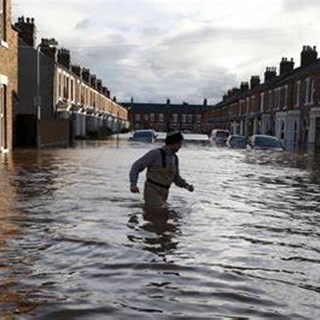
9 March 2023
The ocean covers over 70% of the Earth's surface, providing essential ecosystem services to humans and supporting countless marine species. However, over fishing, pollution, and climate change are threatening the health of our oceans, and urgent action is needed to protect them. This drives Goal 14 of the United Nations (UN) Sustainable Development Goals to; conserve and sustainably use the oceans, seas and marine resources.
On Sunday 5 March, a significant majority of nations agreed on language for a historic UN treaty that will protect ocean biodiversity on the high seas. High seas includes both the waters and seabed that lies beyond the jurisdiction of individual nations and covers around two-thirds of the ocean.
The treaty is a result of two-decades of negotiations and consultation with experts and stakeholders from around the world. It is a testament to the importance of international cooperation in protecting our oceans, and it provides hope that future generations will be able to enjoy the same benefits that past generations have been afforded.
Monica Median, the US Assistant Secretary of State noted that “Today the world came together to protect the ocean for the benefit of our children and grandchildren, we leave here with the ability to create protected areas in the high seas and achieve the ambitious goal of conserving 30% of the ocean by 2030.”
I was part of a delegation with the World Ocean Council (WOC) that attended the 4th session of the Conference of Parties in New York, NY in August 2019.
As part of a presentation at the conference organised by WOC, we reinforced the importance of declaring marine protected areas in the high seas area but also to highlight the socioeconomic values that flow from more effective biodiversity conservation and the need to involve ocean industries in any new marine protected area planning processes.
Since that session in 2019, significant progress has been made on enshrining processes for Environmental Impact Assessment (EIA) for new development and exploration activities in the high seas as well as the process for declaring marine protected areas.
Another critical feature of the treaty is the creation of a mechanism for the development and benefit sharing related to marine genetic resources, such as microbes, algae, and other marine organisms. These resources have significant potential for the development of new medicines, food sources, and other valuable products. However, their exploration and exploitation must be done sustainably, and the treaty provides a framework for the fair and equitable sharing of benefits from these products to all parties.
Agreeing to the language in the treaty is just the first step, and its success will depend on the commitment of all nations to its implementation. It will require significant investment in research, monitoring, and enforcement, as well as the political will to make the right decisions to protect our oceans. Nations will now need to ratify the treaty itself, which will likely require legislative approval.
But some key important questions remain around:
How will the new Environmental Impact Assessment (EIA) process function and how it will be administered?
Who will form the Science and Technical Body that is established by the treaty?
What parts of the high seas can be considered for marine protected areas and how will they be decided and implemented?
How does the new treaty interface with other existing bodies and frameworks for area based management such as the International Maritime Organisation and regional fisheries bodies?
How will developing nations share in both scientific knowledge and in possible future profits from harvested genetic resources and seabed minerals?
On balance though, the new treaty on ocean biodiversity on the high seas is a significant achievement. While there is still much work to be done, this treaty offers hope that nations can work together to ensure the health and vitality of our oceans for generations to come.

Greg is a Senior Associate at BMT and leads the firm’s global campaign related to climate risk and resilience. Based in Brisbane, Australia, Greg has over 25 years of experience in natural hazard and climate change planning and adaptation studies with planning, transport, and conservation authorities.

Greg Fisk
The DCN spoke to our climate change risk, resilience and adaptation expert about preparing for the impacts of a changing climate.

N/A
With the UK and beyond facing unprecedented consequences from rising water levels and climate amelioration, BMT are helping our clients in their need for flood alleviation, prediction, mapping and mitigation. James While talks about 5 ways we can assist our clients.

Ian McRobbie
In a Port Strategy feature, Ian McRobbie highlights the merits of optimising bulk transshipment through ‘Climate-Smart’ simulation technology, drawing on extensive project experience

Jaret Fattori
Jaret Fattori's article in Port Strategy discusses how ports are adapting to climate change and IFRS S-2 regulations. Emphasising the shift towards sustainability through digital integration, decarbonisation, and innovative fuel alternatives, he explores the significant role of collaboration in advancing port sustainability and innovation.